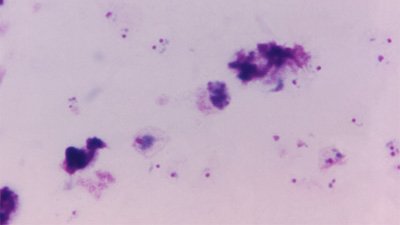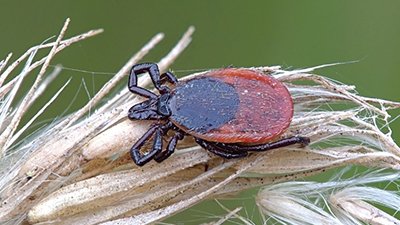
Evolutionary Conjecture Cannot Cure Cancer
Evolutionary scientists assume the patterns they see result from evolution and therefore erroneously believe evolutionary thinking can help the war on cancer.
News Source
- Science Daily: “Predicting the Human Genome Using Evolution”
Few topics in science news generate more excitement than prospects for curing cancer. Whether or not dinosaurs had feathers is all well and good, but cancer research is a topic that hits people where they live, and where they suffer. Can evolutionary science help medical scientists fight this devastating array of diseases?
Temple University’s Sudhir Kumar and colleagues have jumped on that evolutionary cancer research bandwagon. They claim that their study of 500 million years of genetic patterns across the vertebrate evolutionary tree can—through evolutionary predictions—accurately predict mutations associated with cancer and, as a sort of bonus, even explain the genetic underpinnings of human evolution.
Knowing the Normal
There is a great deal of genetic variability among the human population. How do we know what is normal? Generally the norm is determined by sampling lots of people’s genomes and determining what is most common.
“There are two ways to generate a map of the human genome variation: one is to get genomes of all the humans and build a compilation as the 1,000 Genomes Project and others have undertaken,” Kumar explains. However, he adds, “The alternative, which is the basis of our approach, is to compile all genome data from other species and predict what the human sequence reference should be” (emphasis added).1
Once scientists know—based on evolutionary predictions—what the normal human genome “should” be, Kumar’s team contends that information can aid medical research. Kumar explains, “The fascinating part of the story is that once we know what our ancient evolutionary history predicts our sequence to be, then we can compare this expectation to what we observe in human populations today. When there is a discordance such that an unlikely variant is found in many people, it directly indicates that something has changed about us or the protein.”
Evolutionary Expectations
Kumar’s team counted 36,691 evolutionarily improbable differences between the genomes of humans and animals. They believe this reveals what genetic mutations had to have happened in order for humans to have evolved as the unique species we are. Lots of genetic similarity is attributed to evolutionary ancestry. And lots of genomic differences are attributed to evolutionary ascent. Yet these evolutionary scientists are, as usual, simply assuming that the weight of science supports their foregone conclusions. They only consider molecules-to-man evolution as the explanation for the patterns they see.
In God’s Word we learn that our Creator made us the same day as land animals, about 6,000 years ago, without any evolution at all.
In God’s Word we learn that our Creator made us the same day as land animals, about 6,000 years ago, without any evolution at all. God made the first man and woman in His own image, unique and quite different from all animals, including those that evolutionists claim are our closest relatives. (Read more about the fallacies in this claim in “Differences Between Chimp and Human DNA Recalculated: Evolutionists Miss the Real Genetic Gap Between Humans and Chimps.”) We can learn from comparative genetics about the genetic differences that physically distinguish us from animals, but genetic studies do not reveal how humans originated.
Evolution to the Rescue?
Kumar’s team of researchers also believe that by comparing the evolutionarily normalized standard human genome to the mutations that tend to occur most often, they can offer insight that might help medical professionals know how best to direct their cancer research. They write, “We expect allelic EPs [evolutionary probabilities] to be useful in prioritizing variants in biological and clinical investigations, even when sufficient population variation data are not available to train good predictive models.”2
There are several problems with the claims these scientists make and with this approach to “helping” medical research. First of all, like other evolutionists they leap to the conclusion that similarities between different kinds of organisms generally reflect evolutionary relationships. In reality, similarities—even genetic similarities—are simply similarities. They don’t come with a tag declaring their evolutionary origin. Genetic similarities can result from many causes:
- actual ancestry and/or relatedness (as seen among members of a family or a species or a created kind)
- the common designs utilized by the Creator of all life
- mutational hotspots3
- the fallible methodology used to estimate genomic similarity.4
The many genetic similarities among vertebrates are quite expected since all living things were created by the same Creator God to live together using the same basic resources in the same world. Similarities across the supposed evolutionary tree of life utilized by the researchers therefore do not reveal how the human genome evolved.
The researchers also assume that 500 million years of mutations resulted in the evolution of new information to produce all the different kinds of living things in the world. However, biological observations have only ever confirmed that organisms vary within created kinds. Answers in Genesis research biologist Dr. Nathaniel Jeanson, commenting on the study, says, “Using origins to predict genetic function isn’t anything new. We’ve been doing this ourselves now using the scriptural parameters of common ancestry within-‘kinds’-but-not-between-‘kinds.’ In short, whatever the evolutionists come up with, we’ve got a counter model that can be scientifically tested head-to-head with theirs.” (Dr. Jeanson discusses such a biblically consistent model in “Recent, Functionally Diverse Origin for Mitochondrial Genes from ~2700 Metazoan Species.”)
The researchers report that their analysis of many mutations associated with inherited diseases and cancers largely matches the sorts of detrimental genetic variations they expected, based on their model, to be associated with disease. Yet the likelihood of such mutations occurring has nothing to do with molecules-to-man evolution. Cancer develops from the out-of-control growth of mutated cells. The tendency of certain genetic structures to mutate in predictable ways is the likely basis for this observable match, but this has nothing to do with molecules-to-man evolution. Another recent study, “Clock-like Mutational Processes in Human Somatic Cells,” by L. Alexandrov et al., published in Nature Genetics,5 explores the rate of various mutational processes that may relate to the development of cancer. The mutational processes that produce a cell that can develop into a cancer should definitely be studied, but these mutations occur within a given individual, not across animals and eons.
Kumar and colleagues believe that evolutionary probabilities drawn from “the evolutionary lens of our nearest relatives” could help direct cancer research and hence the clinical trials involving real people with desperately real diseases. Commenting on their claims, Answers in Genesis speaker and internal medicine physician Dr. Tommy Mitchell says,
It is certainly desirable to know more about human genetics. No one would argue this point. However, many scientists blindly assume evolutionary explanations for the genetic patterns and variation that are seen. This is foolish. To suggest that this unobservable and untestable worldview should be used as a basis for making clinical decisions is of great concern to me.
Oncological research needs to exploit all that observational science can learn about the cellular processes that can go wrong in this sin-cursed world.
In “Can Evolutionary Clues Cure Cancer?,” we explored a similar line of thinking in which research dollars and hopes for a cure were rooted in circular reasoning built on the imagined sands of time and chance. Cancer is a very complex constellation of diseases. Oncological research needs to exploit all that observational science can learn about the cellular processes that can go wrong in this sin-cursed world. This includes a study of the patterns and rates of mutation. But basing research on models built on faulty evolutionary assumptions has no place in medicine.
Further Reading
- Can Evolutionary Clues Cure Cancer?
- Do Medical Schools Need To Teach More Evolution?
- Why Does God’s Creation Include Death and Suffering?
- Did “Life on Earth” Ever “Favour Evolution Over Creationism”?
- Open Tree of Life Summarizes Evolutionary Beliefs
For More Information: Get Answers
Remember, if you see a news story that might merit some attention, let us know about it! (Note: if the story originates from the Associated Press, FOX News, MSNBC, the New York Times, or another major national media outlet, we will most likely have already heard about it.) And thanks to all of our readers who have submitted great news tips to us. If you didn’t catch all the latest News to Know, why not take a look to see what you’ve missed?
(Please note that links will take you directly to the source. Answers in Genesis is not responsible for content on the websites to which we refer. For more information, please see our Privacy Policy.)
Footnotes
- Molecular Biology and Evolution (Oxford University Press), “Predicting the Human Genome Using Evolution,” Science Daily, October 29, 2015, http://www.sciencedaily.com/releases/2015/10/151029124542.htm.
- L. Liu et al., “A Molecular Evolutionary Reference for the Human Variome,” Molecular Biology and Evolution (October 13, 2015), doi:10.1093/molbev/msv198.
- The mutation rate varies at different locations in our genome. Mutational hotspots are DNA sequences where mutations are seen with greater frequency than others. This may, according to the NIH in Gene Reviews, be “due to some inherent instability, tendency toward unequal crossing over, or chemical predisposition to single nucleotide substitutions.” Earlier this year researchers from Barcelona suggested that varying efficiency of DNA repair mechanisms rather than differential susceptibility to mutation may be responsible for varying mutation rates at different locations in the human genome (“Differential DNA Mismatch Repair Underlies Mutation Rate Variation Across the Human Genome,” Nature 521 (May 7, 2015): 81–84, doi:10.1038/nature14173). And in “Does the Creation Model Make Predictions? Absolutely!,” Dr. David DeWitt of Liberty University points out that the Neanderthal mitochondrial DNA varies at the same mutational hotspots as mtDNA in modern humans. While Neanderthals and modern humans are both human beings, mutational hotspots associated with particular sorts of DNA sequences could potentially increase apparent genetic similarities even between organisms that are unrelated.
- See the subsection “Broken Genes” in “Evaluating Giberson’s Book Saving the Original Sinner with Scripture and Science” and “Comprehensive Analysis of Chimpanzee and Human Chromosomes Reveals Average DNA Similarity of 70%” for two examples of this.
- L. B. Alexandrov et al., “Clock-like Mutational Processes in Human Somatic Cells,” Nature Genetics, November 9, 2015, doi:10.1038/ng.3441.
Recommended Resources

Answers in Genesis is an apologetics ministry, dedicated to helping Christians defend their faith and proclaim the good news of Jesus Christ.
- Customer Service 800.778.3390
- © 2024 Answers in Genesis





